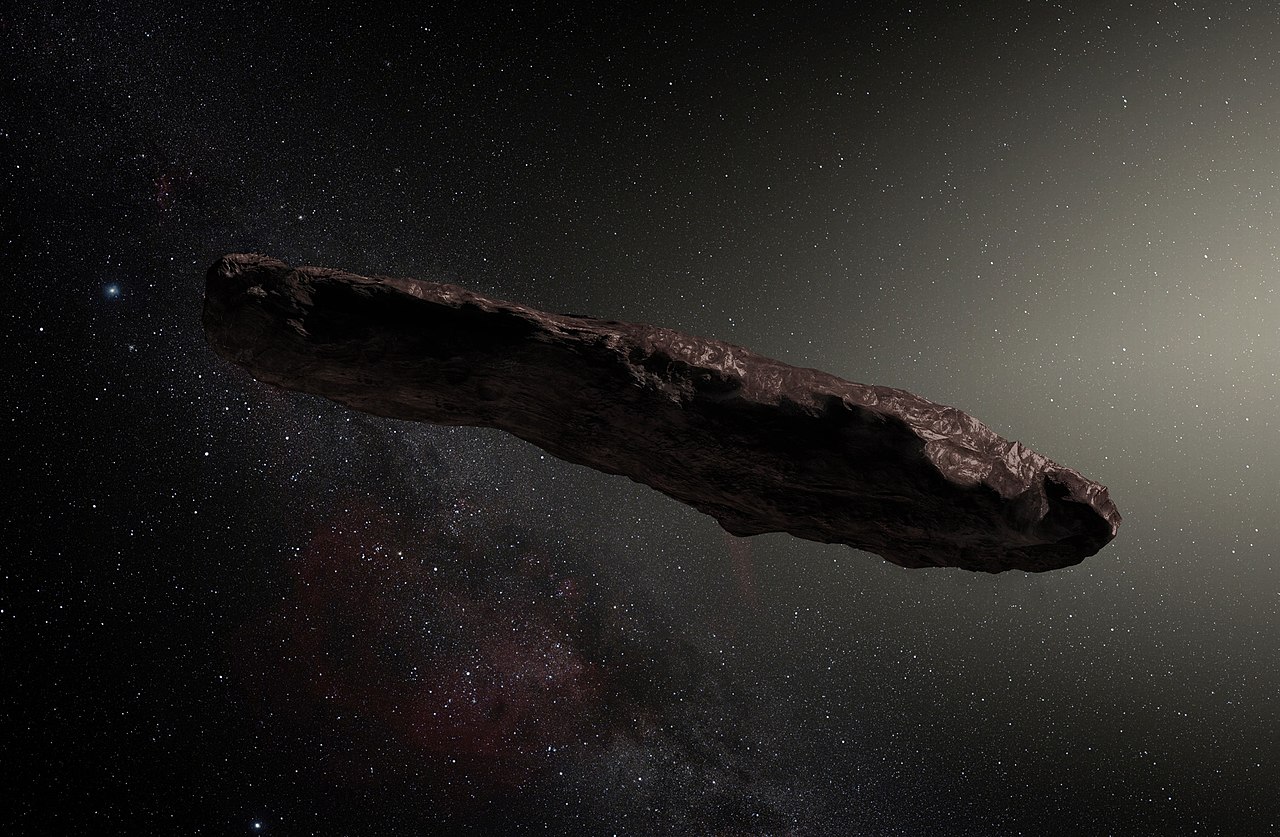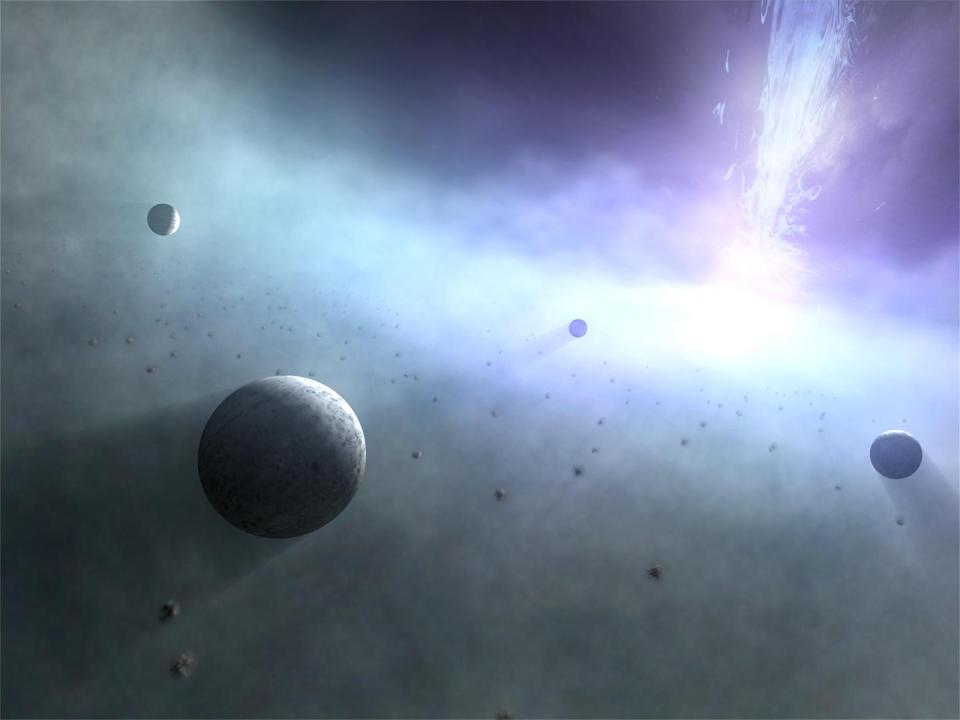Ask Ethan: Why haven’t we made “first contact” with aliens yet?
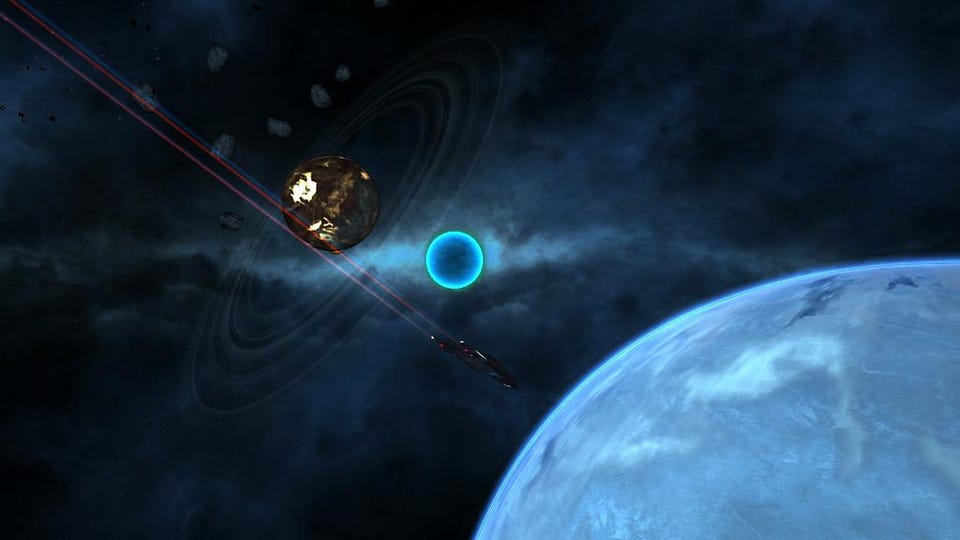
- Long ago, Enrico Fermi posed a simple question just by gazing at the stars: “Where is everybody?”
- Known today as the Fermi Paradox, there are many possible solutions, but some explanations are far simpler than others: namely, that there isn’t anyone else.
- Still, the most common way of estimating who’s out there, the Drake equation, should never be used. Here’s the science of how to do it right.
If you’ve ever gazed up at a dark and clear night sky, you might feel the same thing that I do each and every time: a feeling that it’s beckoning us and drawing us in to explore and wonder what’s out there in the great abyss of space. Each point of distant, twinkling light isn’t just a star in its own right, but also a chance: for planets, for biochemistry, and for life. If we really allow our imaginations to run wild, we might even imagine the existence of something better than mere life, such as the existence of intelligent, self-aware, and technologically advanced civilizations.
But that brings up a question that humanity has obsessed over for generations: If the ingredients for life are common, and we evolved naturally, then where is everyone else? Many of you consistently write in with variations on this question, including Franco Camporeale, Oleg (Alex) Naum, and Zoe Eppley, asking things like:
The Fermi Paradox has come up a few times in my recent reading…do the following things have anything to do with the possibility of life beyond Earth?
- faster-than-light travel
- radio attenuation
- the necessity of enough rare elements
- the merger of humans with machines
It’s a fascinating topic to speculate about, but an even better topic for laying out the science. Let’s take an in-depth look at what we know about all that’s out there.
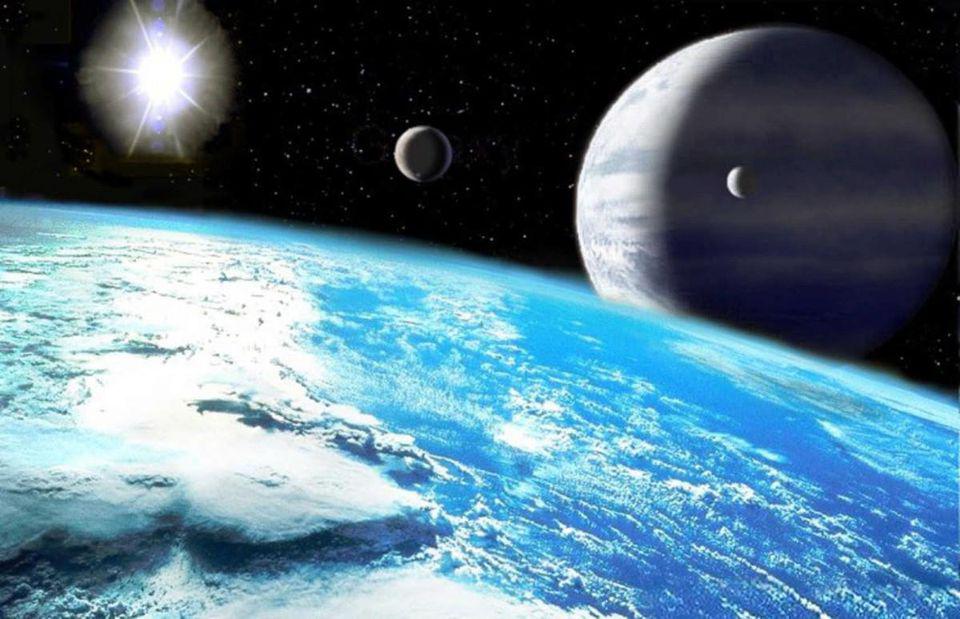
Credit: Lucianomendez
If we want to understand how the Universe makes intelligent life, we have to consider two things. First, we have to consider the steps that needed to occur in order to bring about our own existence. And then, we need to think about ways that intelligent life could arise in circumstances that differ from our own, and to make sure, wherever possible, that we’re doing it in as quantitatively accurate a fashion as possible. We also have to make sure that we don’t make unfounded assumptions, or fall for any one of a number of logical fallacies, like conflating “absence of evidence” with “evidence of absence,” or the post hoc ergo propter hoc (this came after, therefore it was caused by) fallacy.
It’s also important to learn how not to estimate what’s out there. There are two all-too-common mistakes that people — even the most brilliant of scientists — make when considering this question. One is that they make point estimates akin to “we may not know this parameter, so here’s what we estimate it to be,” which is relatively meaningless. If you’re going to make such an estimate, it’s only meaningful if you include an uncertainty range, a set of error bars, or some other likelihood predictor. There’s an enormous difference between saying that you estimate the odds of something to be 1 in 100 with a 10% uncertainty, a 1,000% uncertainty, or a two-tailed uncertainty where it could be as high as 1 in 10, but there could be no lower limit at all.

Credit: University of Rochester
But the other mistake that people make is perhaps the most common of all when it comes to attempting to answer the Fermi Paradox: making use of the Drake equation. The Drake equation yields many interesting lessons, and when it was first put forth, it was a monumental achievement from a scientific perspective. For the first time, it broke up a seemingly unknowable question of how many intelligent, spacefaring civilizations there are within our galaxy today, into a series of smaller questions that we could conceive of solving one at a time.
We could, for example, measure or estimate things like:
- the rate of star formation in the Milky Way
- the share of stars that have planets
- the average number of potentially life-supporting planets around stars with planets
- the fraction of planets that could have life that actually wind up with life
- the fraction of planets with life that go on to develop intelligent life
- the fraction of intelligently inhabited planets that emit detectable signals
- the length of time that such civilizations continue to emit those signals
When you multiply all of those things, you’ll wind up with an estimate for the number of active civilizations that we could potentially detect today.
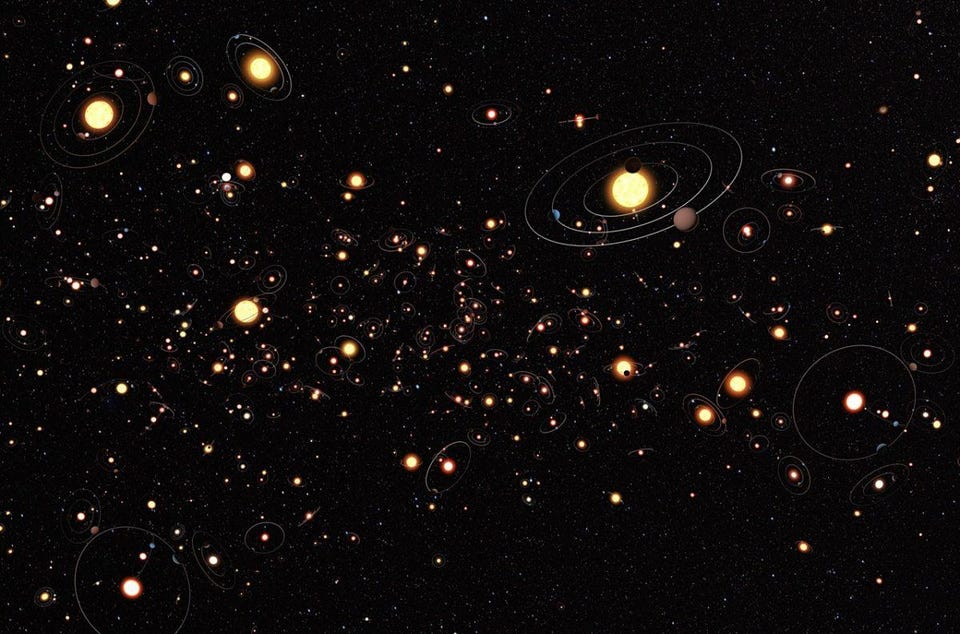
Credit: ESO/M. Kornmesser
But immediately, we run into a few major problems. For one, we’ve measured the rate of star formation in the Milky Way, and we actually know it pretty well. Unfortunately, if you took that star formation rate and multiplied it by the age of the Universe since the hot Big Bang, you’d wind up with almost no stars; you’d calculate that the Milky Way should have formed a total of around 10 billion stars over our cosmic history.
I know that 10 billion probably sounds like a big number, but compared to the actual estimate for the number of stars in our galaxy — which is more like 400 billion — it’s only 2-3%.
Fortunately, it’s easy to identify why this method of calculating how many stars we’ve formed, which you’d imagine would give you the total number of stars in the galaxy, is so thoroughly wrongheaded. The superficial reason is fairly obvious: The star-formation rate is not constant over our cosmic history. In fact, we’ve come to understand that the Universe was born without stars, which began forming during the first ~200 million years or so. We’ve learned that star formation increased for the first ~3 billion years of our cosmic history, reached a peak, and has been dropping ever since. Locally, we’ve probably experienced bursts of star formation when we’ve absorbed smaller, satellite galaxies, and we might even be starting to experience another burst as the Magellanic Clouds and Andromeda exert their gravitational influence on the gas, dust, and other neutral matter within our own galaxy.
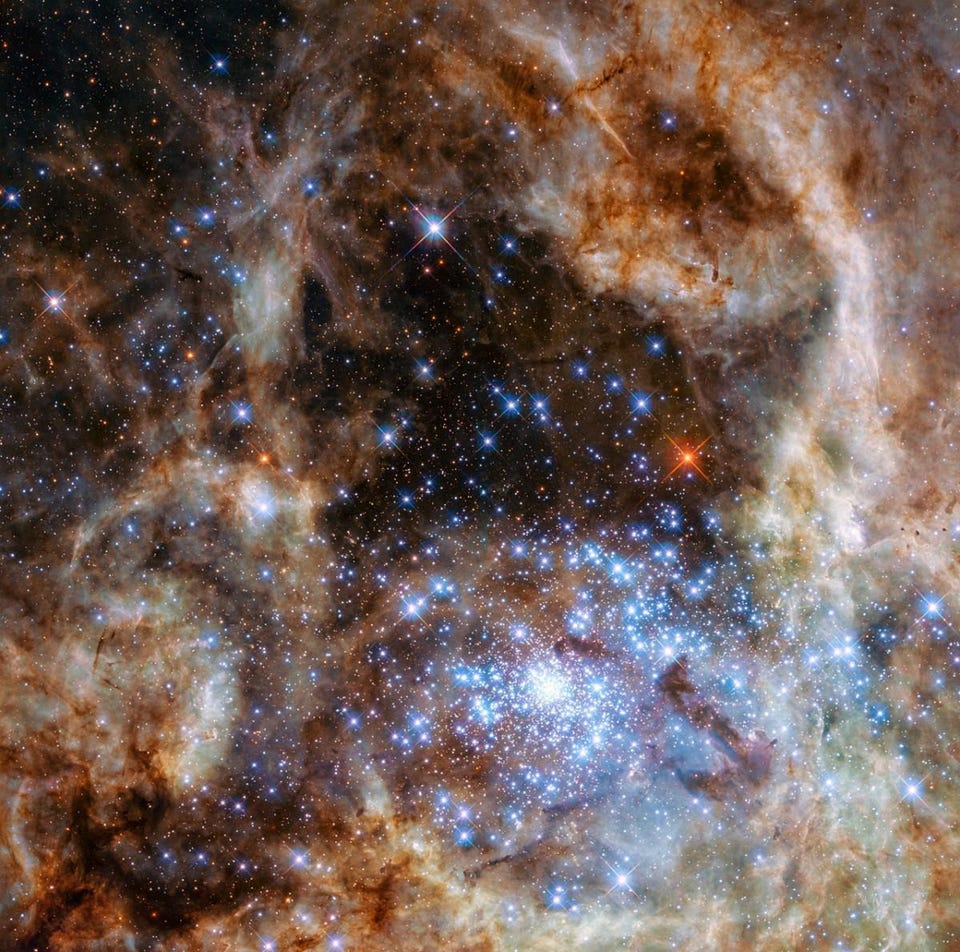
Credit: NASA, ESA, and P. Crowther (University of Sheffield)
But that’s only the superficial reason why the Drake equation is problematic today. The deeper reason is that the Drake equation, when it was put forth, made an assumption about the Universe that we now know is untrue: It assumed that the Universe was eternal and static in time. As we learned only a few years after Frank Drake first proposed his equation, the Universe doesn’t exist in a steady state, where it’s unchanging in time, but rather has evolved from a hot, dense, energetic, and rapidly expanding state: a hot Big Bang that occurred over a finite duration in our cosmic past.
Instead, a much more productive route is to calculate the quantities we now can speak about with some level of certainty, and then move on to the great cosmic unknowns in as responsible a fashion as we can.
Unlike the situation some 60 years ago, when the Drake equation was first proposed, we now have an excellent idea of what our Universe is like, both in and beyond the Milky Way and the Local Group. We understand what the various populations of stars are that exist, and what sorts of steps need to occur to make heavy elements, rocky planets, and allow for the possibility of complex chemistry and important reactions, such as the formation of energy-storing molecules from nothing more than the ubiquitous building blocks and starlight.
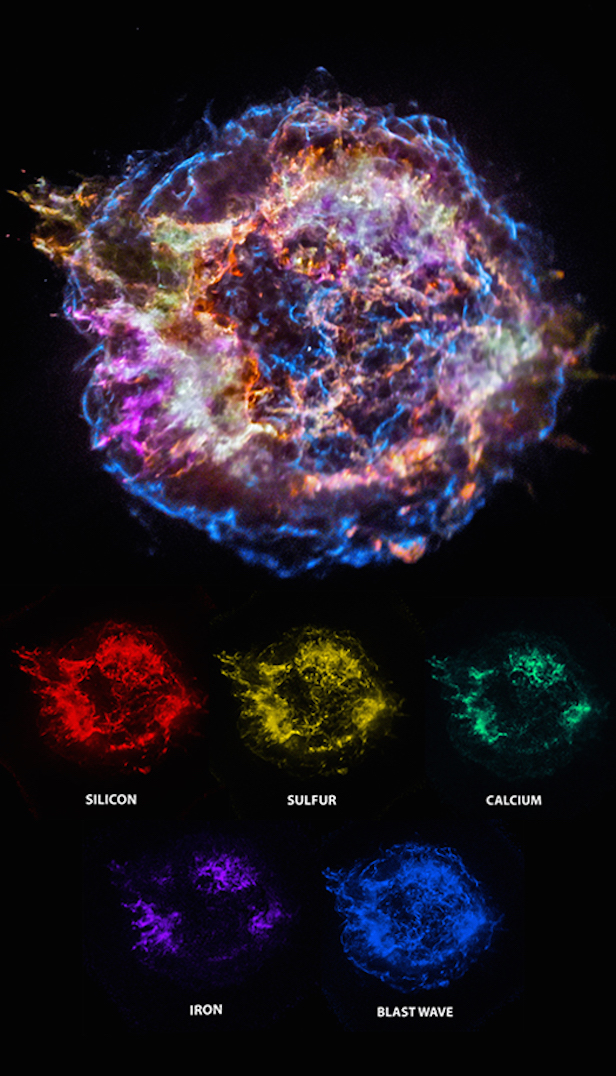
Credit: NASA/CXC/SAO
We’ve also learned a lot about the types and abundances of planets that exist around stars other than our own: exoplanets. As recently as 30 years ago, we were only discovering our very first planets around stars besides the Sun; at the end of 2021, we’re closing in on a whopping 5,000 confirmed exoplanets. And sure, there are biases in our data — we’re preferentially detecting the planets that are the easiest to detect — but we know how to account for those biases.
Instead of needing to speculate about how many stars form, how many have planets, how many planets per system have the potential for life, etc., we can actually utilize some excellent data. Here in our modern Milky Way, we already know:
- how many stars there are
- how those stars are divided into different populations
- how many planets there are per star
- how many of those planets have the right composition of elements to lead to complex chemistry
- how many of those planets have the potential for hosting life
On this front, it’s actually straightforward to come up with a solid estimate for how many potentially habitable planets are in our galaxy.
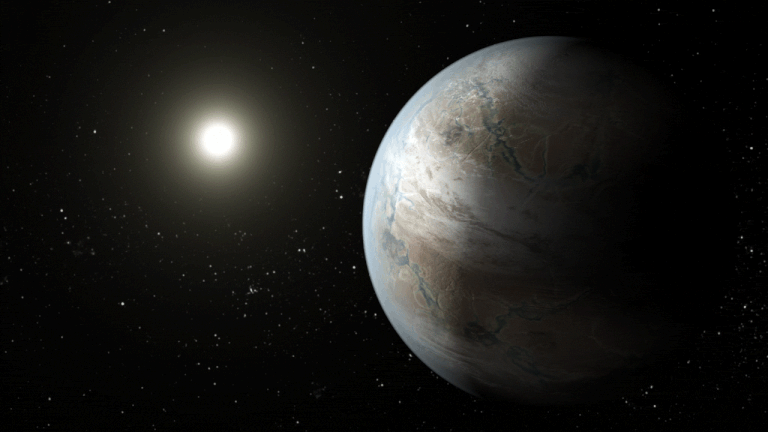
In fact, we can perform that calculation in a variety of ways, just to show the power of our set of knowledge. Of the approximately 400 billion stars in the Milky Way:
- ~80% are red dwarfs
- ~18% are like the Sun
- only ~2% are too massive and short-lived to be interesting for life
As far as we can tell, there are about 5 to 10 planets per stellar system, with approximately ~1 to 2 planets in what we (questionably) call the habitable zone around each star. Of the planets that exist around Sun-like stars, we believe that ~20% of them are Earth-like in terms of size; a greater percentage than that are terrestrial around the more common red dwarf stars.
If we assume, conservatively, that red dwarf systems are not habitable at all, but Sun-like systems are, then all we have to do is multiply the following figures:
- the number of stars (400 billion)
- the proportion that are Sun-like enough to support life (0.18)
- the number of expected potentially habitable-zone planets per relevant star (1.5)
- the fraction of those planets that are Earth-like in size (0.20)
We then derive an estimate for the number of potentially inhabited planets in the Milky Way: 21,600,000,000.
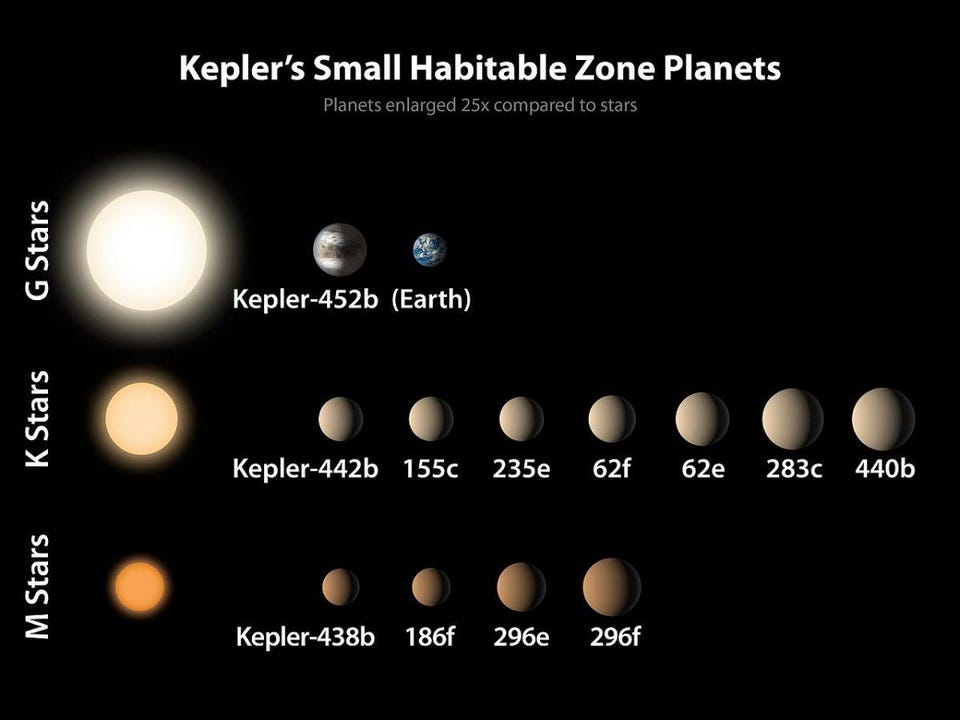
Credit: NASA/Ames/JPL-Caltech
It doesn’t make sense to use so many significant figures — 20 billion is good enough — but also we have to remember that all of these numbers have uncertainties. There may be as few as 200 billion stars; half of our estimate. Some of the stars may be too low in metals — what astronomers call the heavy elements in the Universe — for planets to support life, but the percentage is small; less than 10% for certain. Some stars might not have planets, but again the percentage is small; less than 20% for certain. The habitable zone may be larger or narrower than we think; tack another ~33% uncertainty onto our estimate.
And we haven’t sampled the low end of the mass/radius portion of the exoplanet population very well; our estimate of 20% being Earth-like in size could go up or down, so it’s reasonable to put a 25% uncertainty on that figure. All in all, there could reasonably be as few as 5 billion potentially habitable planets in the Milky Way, or perhaps as many as 50 billion. If red dwarf systems are potentially habitable as well, that number could increase tenfold. And at the same time, many of the things we’ve worried about in the past likely don’t particularly matter one way or the other, such as:
- whether a planet has a major moon or not
- whether it has a Jupiter-like world in its stellar system
- whether it’s located close to or far from the galactic center
- whether it’s a part of a singlet or multi-star system
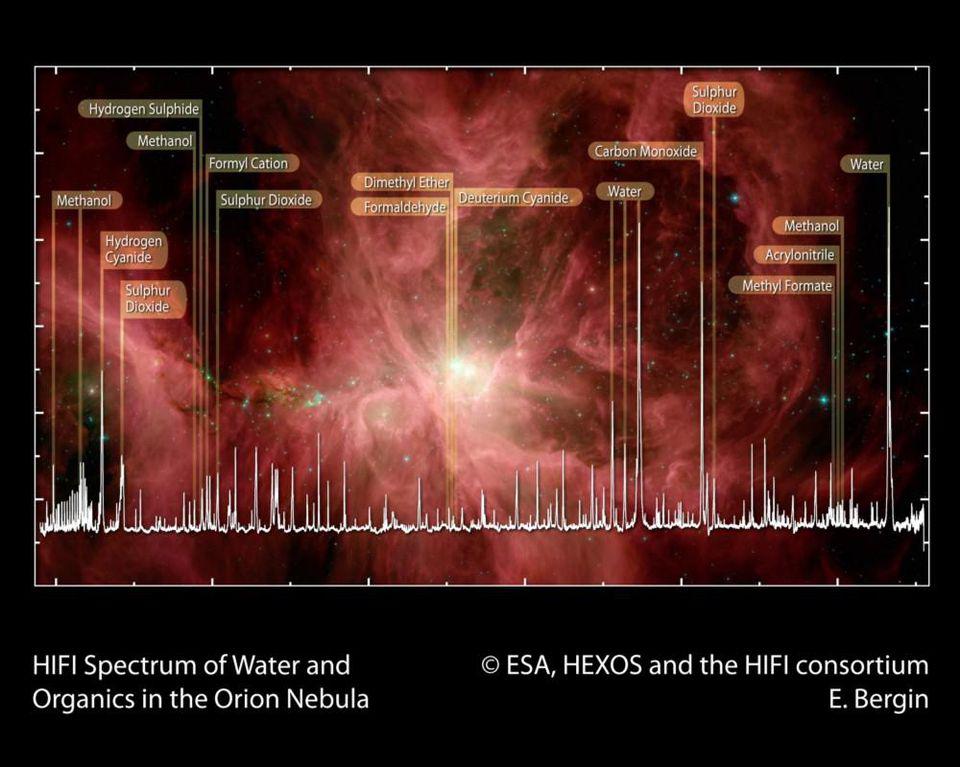
Credit: ESA, HEXOS and the HIFI consortium
But beyond that, we still have some major, major unknowns where our level of cosmic ignorance is truly staggering. We know the ingredients that life requires are ubiquitous everywhere we look: in asteroids, in gas in the galactic center, in outflows around massive, newly forming stars, and even in the atmospheres and on the surface of other planets and moons in our Solar System.
But even with all the raw ingredients, what is the fraction of potentially inhabited planets where life actually arose from non-life? In Carl Sagan’s original Cosmos series, he gave a figure of 0.1 — 10% — and asserted that this was a conservative number.
That is not necessarily the case; life could be difficult. Just because it arose early in the history of Earth doesn’t mean that a significant fraction of planets actually have (or ever had) life on them. It could be nearly 100%, or 10%, or 1%, or 0.01%, or a one-in-a-million chance that life arises from non-life. If we rewound the clock and started Earth over again, how likely is it that life would have arisen and thrived here? Our ignorance is astounding.

Credit: NASA
Similarly, once life does arise, how often does it get wiped out, versus how often does it endure for many billions of years? How frequently does it remain in a relatively simple state, unable to develop complexity, differentiation, multicellularity, or sexual (meiotic) reproduction? How often, even after billions of years, does it actually begin to look like life on Earth at the start of the Cambrian explosion?
Again, we have no knowledge at all about how this might work. If you estimated that it occurred 10% of the time, that’s reasonable. But so is 90% of the time. So is 0.001% of the time. Without observational or experimental evidence to point us in the right direction, we’re simply deluding ourselves if we make a strong assertion.
Furthermore, we know that after life on Earth became complex, differentiated, multicellular, and sexually reproductive, it still took more than 500 million years for a species to arise that would become technologically advanced, and that was likely just the result of random chance. How often does that occur? Does it make sense to represent this probability in percentages, or is this such a rare event that it’s like winning the Powerball lottery five times in a row? Furthermore, how long does that technologically sophisticated life endure? Does it ever become a multi-planet or even an interstellar civilization, or is the progression from “technologically advanced” to “extinct” a relatively rapid one?
At this point, our uncertainties are so large that it’s eminently reasonable that not only might human beings be the only intelligent life in the Milky Way, but in the entire observable Universe, which likely contains more than a trillion (1,000,000,000,000) times as many stars as our own galaxy.

Credit: NASA/Alan Chinchar
We can confidently say, give or take, that there are perhaps 20 billion Earth-sized planets, made of similar elements to our own world, at the right distance from their parent star to have liquid water on their surface, assuming an Earth-like atmosphere as well. But of those worlds, how many of them have life? It could be most of them, many of them, or only a tiny fraction. Of the ones with life, how many of them develop complex, differentiated, intelligent, and technologically advanced life?
Before we even start asking questions about longevity, colonization, or machine-based life, we should admit — with a non-negligible probability — the most obvious resolution to the Fermi Paradox: The reason we haven’t made first contact with intelligent, technologically advanced, and spacefaring alien civilizations is because there are none. In all the galaxy, and perhaps even in all the Universe, we really may be alone.
Without evidence to the contrary, we have every reason to keep looking and searching, but still no reason other than our own preferences to believe that other creatures, similar to humans, exist out there. While it may be incredibly fun to theorize a myriad of possible explanations as to why intelligent extraterrestrials might remain hidden from us, the simplest possibility — that they just aren’t out there — should be the default hypothesis until proven otherwise.
